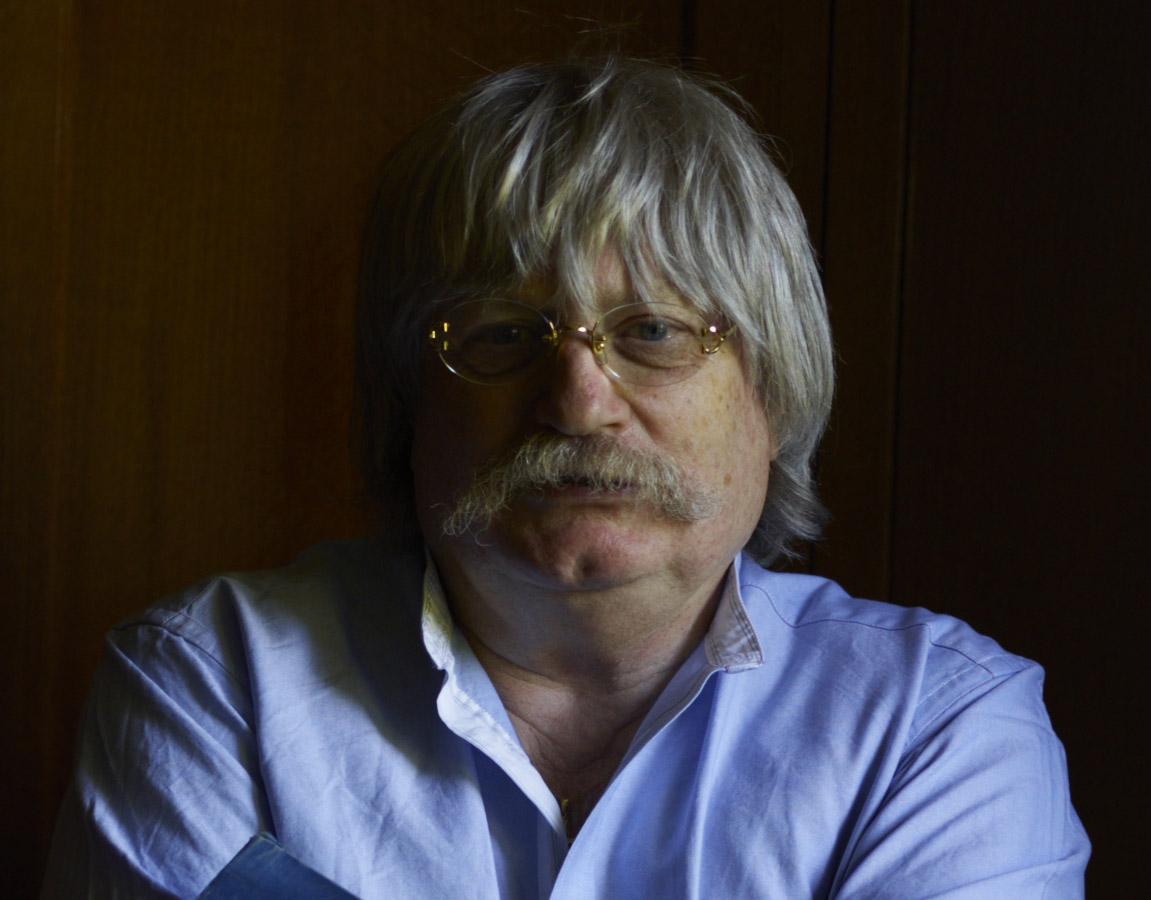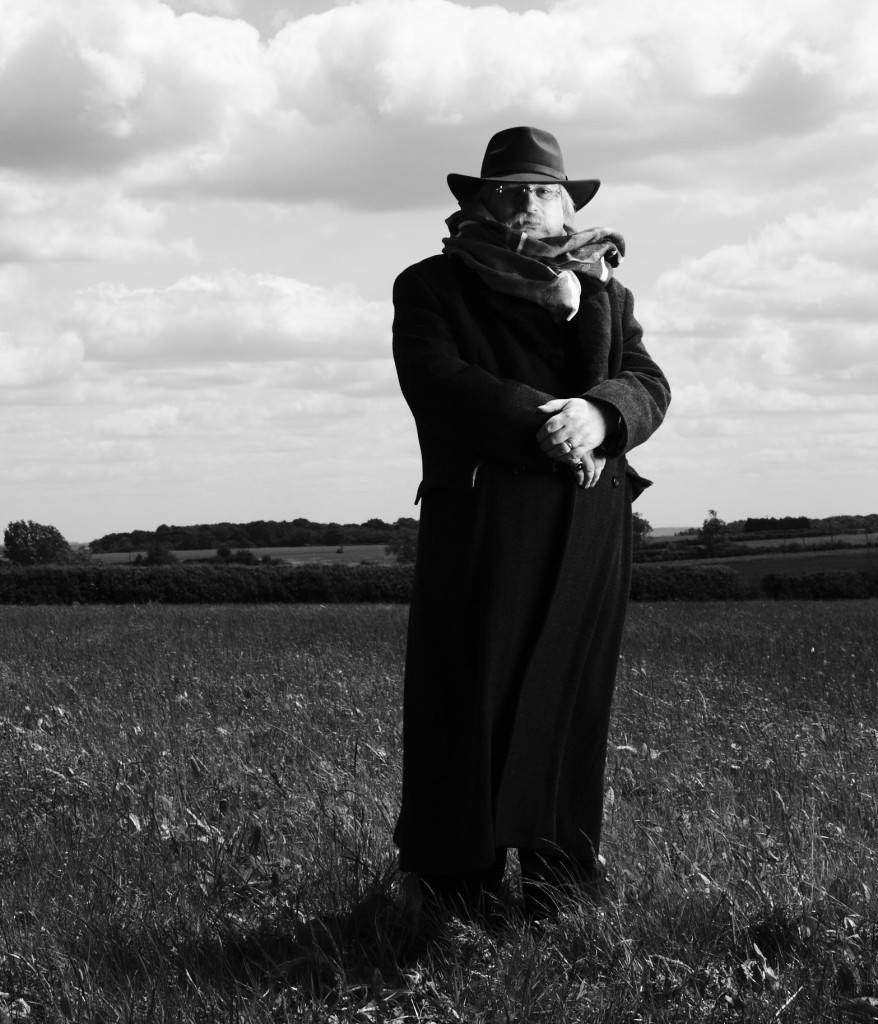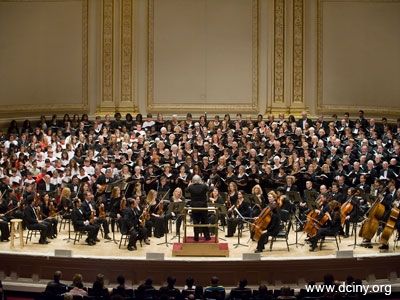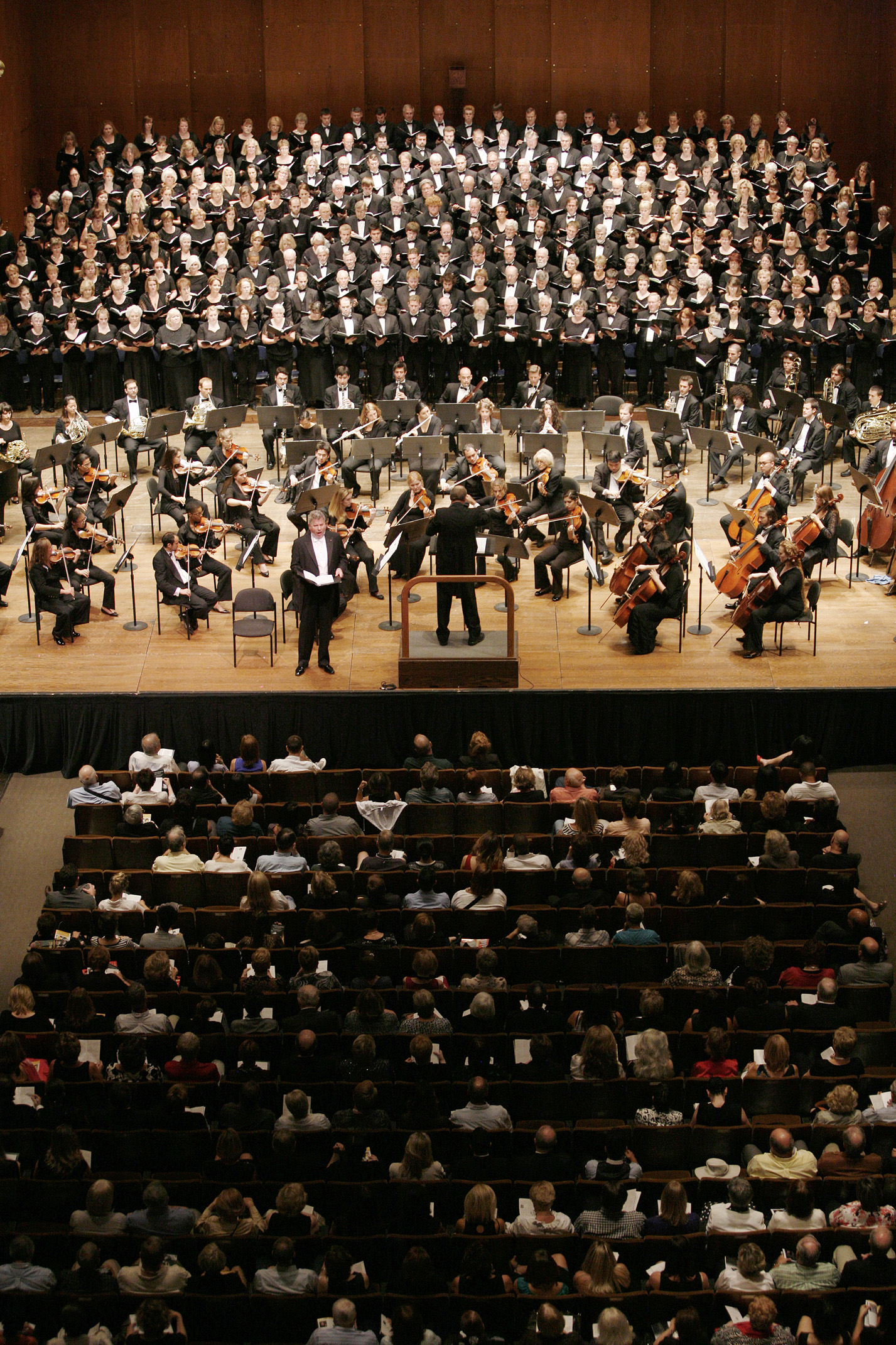Distinguished Concerts International New York (DCINY) presents The Music of Karl Jenkins
Karl Jenkins, composer/conductor
Jonathan Griffith, DCINY Artistic Director/Principal conductor
Lucy Knight, soprano; Mark Watson, baritone
Distinguished Concerts Orchestra; Distinguished Concerts Singers International
Stern Auditorium, Carnegie Hall, New York, NY
January 19, 2015
In what has become an annual tradition, Distinguished Concerts International New York (DCINY) presented a concert in celebration of Martin Luther King, Jr. Day featuring the music of Karl Jenkins. This edition was truly global in scope, with singers from Germany, South Africa, United Kingdom, Switzerland, Sweden, Canada, Russia, Ireland, Italy, California, and Massachusetts (including a children’s chorus). With a first half consisting of the United States premieres of Llareggub and The Healer, a second half featuring The Peacemakers, and a post-concert opportunity to greet Mr. Jenkins and have him autograph his latest CD release, it had all the makings of a special evening.
Before the concert proper, Mr. Jenkins joined DCINY conductor Jonathan Griffith on stage for an impromptu conversation about the works on the first half. There was much laughter as Mr. Griffith attempted to pronounce poet Dylan Thomas’s (invented) “Welsh” word Llareggub. Mr. Jenkins smiled as he gave what would be a “proper” Welsh pronunciation (k(ch)la-REG-gub), and then told the audience that when spelled backwards it has a very different meaning in English, a wordplay betraying Thomas’s sense of humor. I leave it for the reader to figure it out! Mr. Jenkins also expressed his admiration and thanks for the many texts written especially for him by his wife, Carol Barratt, a formidable talent in her own right. After a few closing words about Mr. Jenkins’s esteem for Terry Waite (who was captured by terrorists in January 1987 while working to secure the release of hostages, and held captive for nearly five years), who provided friendship and texts to the composer, Mr. Jenkins then took to the podium to conduct Llareggub.
Llareggub is a musical snapshot of life of the fictional village setting of Dylan Thomas’s Under Milk Wood. The three movements, Starless and Bible-Black, Eli Jenkins’ Prayer, and At the Sailor’s Arms, are played without break. Starless and Bible-Black is serene, with an atmospheric feeling that is strongly suggestive of a pitch-black night that slowly moves towards daybreak. The second movement, Eli Jenkins’ Prayer, features a quote from a hymn, “Burnt Oak”, written by Karl Jenkins’s father (not to be confused with Eli Jenkins, who was a creation of Dylan Thomas and bears no relation to the composer’s father). Concertmaster Jorge Ávila played his solo part with expressive feeling that was sentimental, but never maudlin. The finale, At the Sailor’s Arms, is a visit to the local pub, filled with chat, drinking, merriment, more drinking, brawling, and drinking until drunk. Complete with a honky-tonk piano, it was just like being there in the thick of it. One could easily imagine Dylan Thomas amongst the locals, matching them drink for drink. Mr. Jenkins led the Distinguished Concerts Orchestra with his customary understated manner, always letting the music and the musicians take center stage. Llagerggub was a delightful quarter-hour visit to the wonders and whimsy of Wales, a trip this listener very much enjoyed taking. I suspect the large audience shared my opinion, as they gave Mr. Jenkins a hearty ovation.
After this happy romp, it was time to move to the serious side with The Healer. Subtitled A Cantata for St. Luke, The Healer is a nine-movement work scored for soprano and baritone soloists, chorus, strings, oboe (doubling on cor anglais), and percussion. Taking a page from his earlier Stabat Mater, the composer uses the middle-eastern percussion instruments (the riq and darbuca) to accentuate the sounds of the ancient land. With text from the Book of Common Prayer, St. Luke (from the Authorised Version (Luke 15: 3-7) and Vulgate (Luke 2:29-32) version of the Holy Bible), William Blake, Fyodor Dostoyevsky, Carol Barratt, Vivien Harrison, and Terry Waite, The Healer is another demonstration of Mr. Jenkins’s seemingly limitless ability to capture the essence of such evocative material with the simplest of means. A perusal of the score highlights this – it is deceptively simple, but the net effect is one of great import. This is the mark of a composer who has the courage to stick to his guns in a musical world that often scoffs at such an approach as pandering to the hoi polloi.
Highlights for this listener were in abundance, however I will limit myself to those I found the most compelling. Soprano Lucy Knight captured the essence of “The eyes of a child” with true innocence. Baritone Mark Watson projected strength throughout, and his “The Shepherd” was particularly fine. The large chorus was well prepared, from the chant-like Prologue to the Epilogue (Nunc dimittis). Special mention goes to oboe/cor anglais soloist Ryan Walsh for his excellent playing. The Healer can well join the growing list of works by Mr. Jenkins that should enjoy widespread performances.
After Intermission, it was time for the two-part, seventeen movement The Peacemakers. Scored for orchestra, chorus, soprano soloist, bass and ethnic flutes, ethnic percussion, Uilleann pipes, soprano saxophone, and electric bass, The Peacemakers resembles his earlier works The Armed Man in its blueprint and Stabat Mater in multicultural influences. Quoting Mr. Jenkins, “One line from Rumi sums up the ethos of the piece: ‘All religions, all singing one song: Peace be with you.'” This is an ideal that our world sadly is sorely lacking, as the composer himself lamented in his program notes. The texts for The Peacemakers comes from a variety of sources, some expected (Scripture from the Bible and Qur’an, Gandhi, the Dali Lama, Nelson Mandela, etc.), some unexpected (Albert Schweitzer, Percy Shelley, Anne Frank), and of course, Carol Barratt and Terry Waite.
Unlike The Armed Man, with the duality of war and peace, The Peacemakers is singularly focused on peace. The music draws one in and holds one in its thrall, rather than grabbing and pulling one as The Armed Man does. This is not to say that there are not any martial moments in The Peacemakers, but when they appear, it is a joyful call in the name of peace rather than any warlike saber rattling. As much as I would enjoy commenting on each of the seventeen movements, I am going to single out two movements that were my favorites, the hauntingly beautiful The Dove, with Lucy Knight’s exquisite heart-melting voice, and the amazing He had a dream- Elegy for Martin Luther King Jr. with the soprano saxophone’s bluesy riffs winding in and out of the melody, complete with a quote from Robert Schumann’s Träumerei. It could easily stand alone in performance , and would be a welcome addition to any musical tributes for Dr. King. Kudos to all the soloists (Jorge Ávila, Violin, Jesse Han, Bass Flute, Premik Russell Tubbs, Bonsuri and Ethnic Flutes, from NYJAZZ: Rob Derke, Soprano Saxophone; Carlo de Rosa, Electric Bass; and Andy Blanco, Ethnic Percussion, Joseph Mulvantrey, Uilleann Pipes), the Distinguished Concerts Orchestra, and the Distinguished Concerts Singers International.
Maestro Jonathan Griffith led yet another winning performance, as I have come to expect from this fine musician. It is no surprise that Mr. Griffith was awarded the 2014 American Prize in Conducting- professional orchestra division. The ovation was long, loud, and well earned. Mr. Jenkins took to the stage and modestly bowed while saluting the performers. It was a wonderful ending to a exceptional evening of music. I am already looking forward to January 18, 2016.





